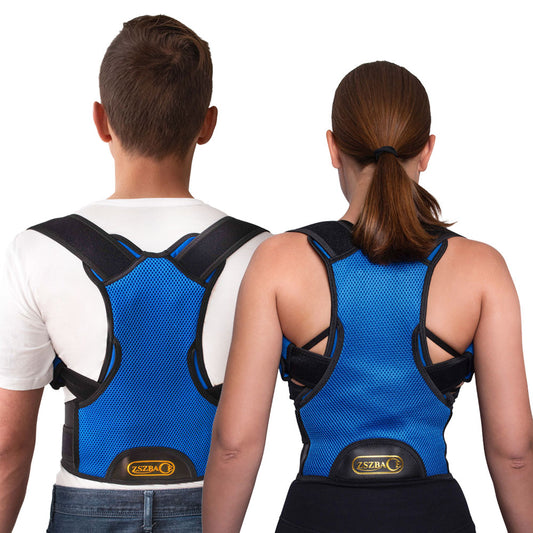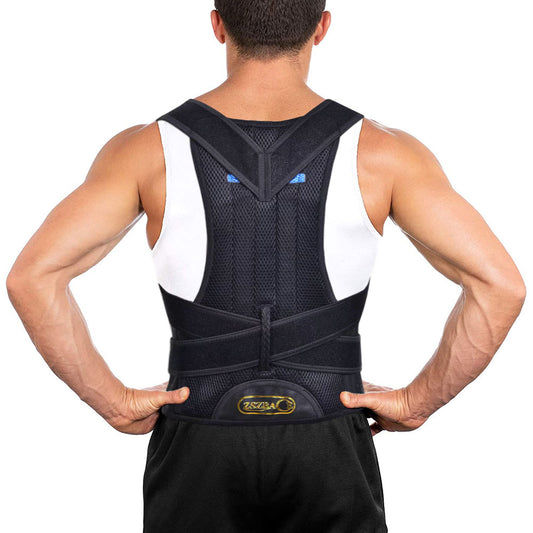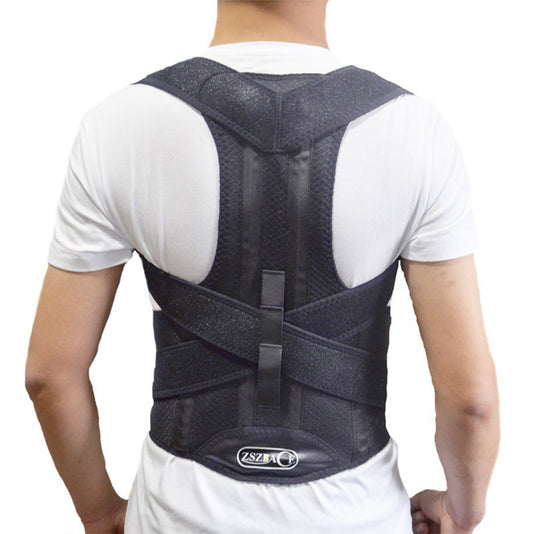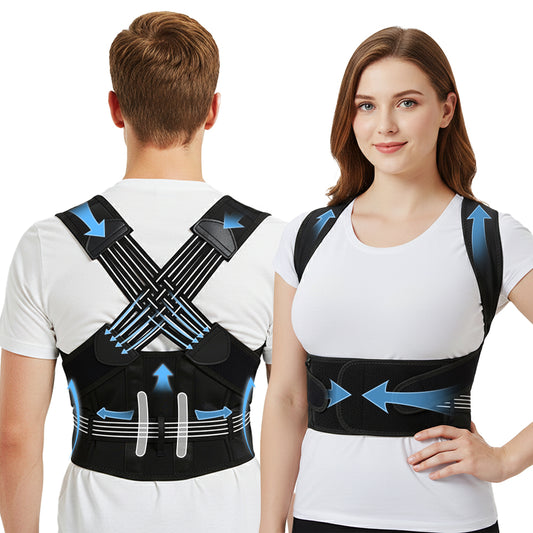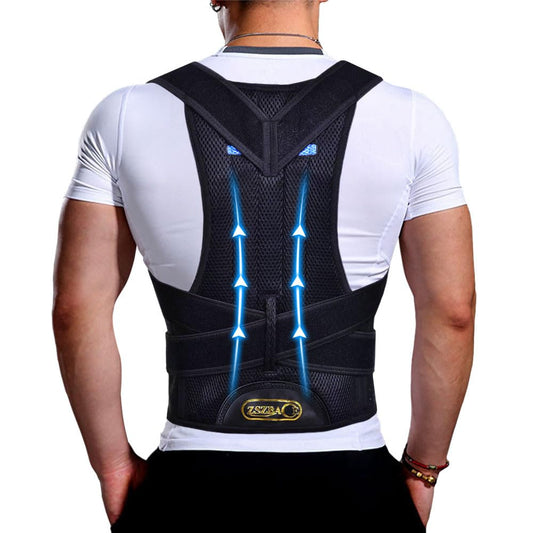-
{Ship from US} ZSZBACE Back Support Belts Posture Corrector Back Brace
Regular price $36.00 USDRegular price$59.00 USDSale price $36.00 USDSale -
ZSZBACE Back Brace Posture Corrector for Women and Men Back Lumbar Support
Regular price $36.00 USDRegular price$59.00 USDSale price $36.00 USDSale -
ZSZBACE Back Support Belts Posture Corrector Back Brace
Regular price $36.00 USDRegular price$36.00 USDSale price $36.00 USD -
Back Support Belts Posture Corrector Back Brace Improves Posture and Provides For Lower and Upper Back Pain Men and Women
Regular price $36.00 USDRegular price$38.00 USDSale price $36.00 USDSale -
NEW Upgraded Back Brace Support Belt for Upper back, Neck and Shoulder Pain, Invisible Posture Corrector, Premium Material with Convenient Design for Daily Use
Regular price $36.00 USDRegular price$38.00 USDSale price $36.00 USDSale -
Back Brace Posture Corrector Clavicle Support Brace Medical Device to Improve Bad Posture, Thoracic Kyphosis, Shoulder Alignment, Upper Back Pain Relief for Men and Women
Regular price $37.99 USDRegular price$45.99 USDSale price $37.99 USDSale -
NEW Back Brace Posture Corrector for Women and Men
Regular price $25.00 USDRegular price$56.00 USDSale price $25.00 USDSale -
Posture Corrector for Women and Men and Pain Relief Shoulder Straightener
Regular price $36.00 USDRegular price$78.00 USDSale price $36.00 USDSale -
2025 Upgraded Back Brace Support Belt for Upper back, Neck and Shoulder Pain, Invisible Posture Corrector
Regular price $58.00 USDRegular price$72.00 USDSale price $58.00 USDSale -
Lumbar Back Brace | Chronic Pain Relief from Sciatica and Pinched Nerve
Regular price $38.00 USDRegular price$52.00 USDSale price $38.00 USDSale
Collection: Back Braces for Pain Relief and Posture Correction
Comprehensive Back Braces for Pain Relief and Posture Correction
In today's fast-paced world, maintaining a healthy spine and posture has become more important than ever. Whether you're enduring chronic back pain, recovering from an injury, or simply looking to improve your posture, our range of back braces can provide the support you need.
Who Needs a Back Brace?
Back braces are an essential tool for anyone experiencing:
- Chronic back pain: Individuals suffering from persistent lower or upper back pain due to lifestyle or medical conditions.
- Poor posture: Those who spend long hours at a desk, leading to slouching or misalignment of the spine.
- Post-surgical recovery: Patients who have undergone back surgeries and need stabilization during the healing process.
- Athletic recovery: Athletes recovering from sports injuries can benefit from added support.
If you identify with any of the conditions mentioned above, a back brace might be suitable for you.
Why You Need a Back Brace
Back braces provide invaluable support, helping to:
- Reduce back pain: By offering additional spinal support and reducing stress on the lower back.
- Correct posture: They help redistribute weight across the spine, supporting a natural alignment.
- Facilitate healing: Braces limit motion during recovery, providing a safe environment for healing.
- Enhance daily functionality: Improved posture and reduced pain increase efficiency in daily tasks.
Explore our upgraded back brace options that integrate seamlessly into your routine for maximum comfort and support.
Determining Suitability
Signs and Symptoms
You might benefit from a back brace if you experience:
- Frequent backaches: Especially when seated or active.
- Notable posture imbalances: Such as slumping shoulders or forward head syndrome.
- Post-surgical needs: If advised by your healthcare provider.
Characteristics of Our Braces
Our back braces are crafted for optimal support and comfort, featuring:
- Premium materials: Ensuring durability and ease of wear.
- Adjustable fit: Accommodating different body types and usage needs.
- Convenient design: Suitable for daily activities without discomfort.
Discover our diverse range of posture correctors, meticulously designed for men and women.
Common Questions
Can I wear a back brace all day?
While some braces are designed for extended wear, it's typically recommended to use them for a few hours daily unless your doctor advises otherwise.
Will a back brace weaken my muscles?
There is a concern that over-reliance can lead to muscle weakening. Our braces are intended for supportive use and should complement, not replace, core strengthening activities.
Are back braces noticeable under clothing?
Our Invisible Posture Correctors are designed to be discreet, allowing you to wear them comfortably beneath everyday attire.
Conditions Benefitting from a Back Brace
Back braces are effective for various conditions, including:
- Postoperative healing: Stabilizing the spine post-surgery.
- Spondylolisthesis and spondylolysis: Reducing painful motion and stress on the spine.
- Osteoarthritis: Alleviating stress on inflamed joints.
- Vertebral fractures: Limiting motion to promote effective healing.
Visit our collection to find the brace that fits your specific needs.
Enhancements from Regular Use
Utilizing our specially designed back braces can help:
- Improve posture: Reinforcing correct spine alignment.
- Boost confidence: With better posture comes greater self-assurance.
- Eases daily tasks: Less pain means more active participation in life.
We, at ZSZBACE, have perfected the design and quality of our back braces through years of diligent research and manufacturing. Our commitment to excellence is reflected through our professional customer service and reliable after-sales support.
Let our expert-backed products guide you on your journey to improved comfort and health. Don't hesitate to reach out for personalized recommendations or support – we're here to help you find the perfect solution for your posture and back pain needs.




